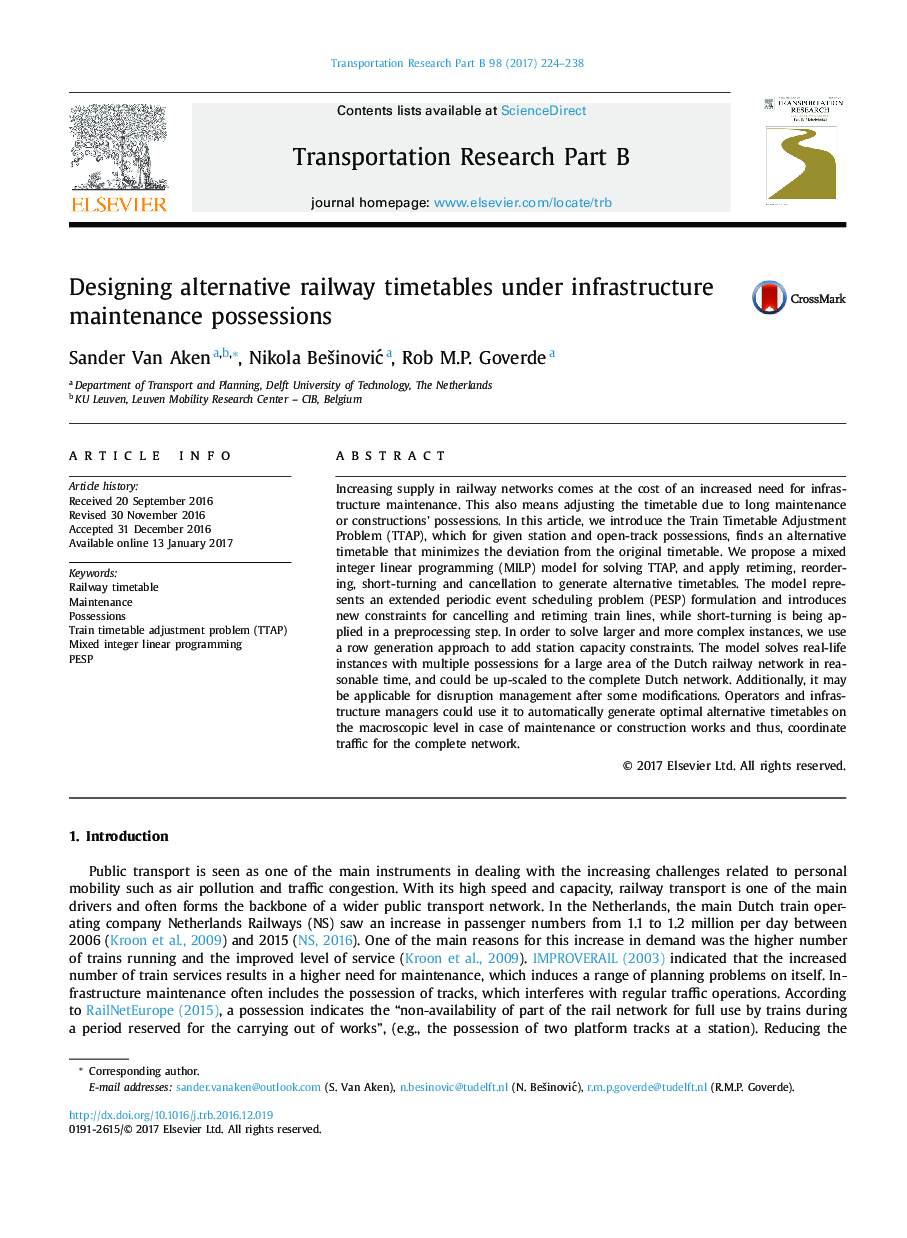| کد مقاله | کد نشریه | سال انتشار | مقاله انگلیسی | نسخه تمام متن |
|---|---|---|---|---|
| 5127124 | 1488948 | 2017 | 15 صفحه PDF | دانلود رایگان |
- We present the first model to adjust periodic timetables to multiple possessions, coordinating measures on a macroscopic level.
- We propose a new set of station capacity constraints for PESP.
- We model retiming and cancellation of trains into PESP.
- Row generation is used for adding station capacity constraints to reduce memory consumption and computation time.
- The model has been tested on several real-life scenarios of the Dutch railway network, resulting in promising alternative timetable solutions and low computation times.
Increasing supply in railway networks comes at the cost of an increased need for infrastructure maintenance. This also means adjusting the timetable due to long maintenance or constructions' possessions. In this article, we introduce the Train Timetable Adjustment Problem (TTAP), which for given station and open-track possessions, finds an alternative timetable that minimizes the deviation from the original timetable. We propose a mixed integer linear programming (MILP) model for solving TTAP, and apply retiming, reordering, short-turning and cancellation to generate alternative timetables. The model represents an extended periodic event scheduling problem (PESP) formulation and introduces new constraints for cancelling and retiming train lines, while short-turning is being applied in a preprocessing step. In order to solve larger and more complex instances, we use a row generation approach to add station capacity constraints. The model solves real-life instances with multiple possessions for a large area of the Dutch railway network in reasonable time, and could be up-scaled to the complete Dutch network. Additionally, it may be applicable for disruption management after some modifications. Operators and infrastructure managers could use it to automatically generate optimal alternative timetables on the macroscopic level in case of maintenance or construction works and thus, coordinate traffic for the complete network.
Journal: Transportation Research Part B: Methodological - Volume 98, April 2017, Pages 224-238
